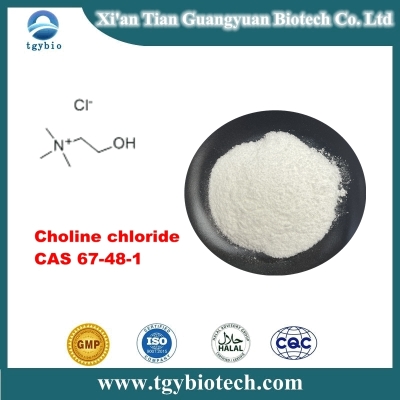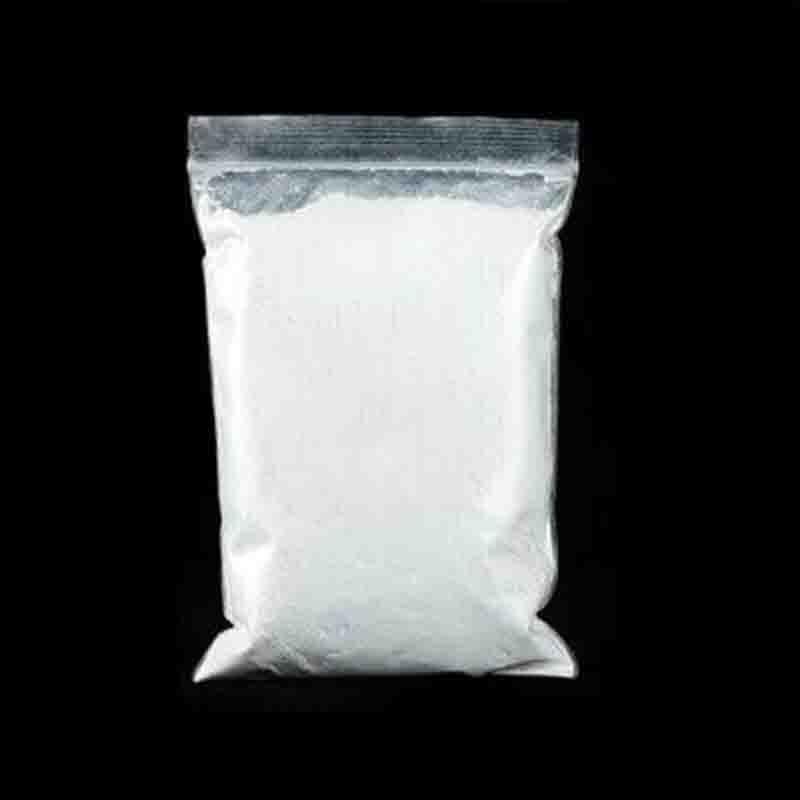-
Categories
-
Pharmaceutical Intermediates
-
Active Pharmaceutical Ingredients
-
Food Additives
- Industrial Coatings
- Agrochemicals
- Dyes and Pigments
- Surfactant
- Flavors and Fragrances
- Chemical Reagents
- Catalyst and Auxiliary
- Natural Products
- Inorganic Chemistry
-
Organic Chemistry
-
Biochemical Engineering
- Analytical Chemistry
-
Cosmetic Ingredient
- Water Treatment Chemical
-
Pharmaceutical Intermediates
Promotion
ECHEMI Mall
Wholesale
Weekly Price
Exhibition
News
-
Trade Service
Click the blue word to pay attention to our moderate fear response is necessary for the survival of humans and animals, to be able to assess potential dangers and respond quickly.
But excessive fear causes diseases such as post-traumatic stress disorder (PTSD).
Nitric oxide (NO) is a free radical with multiple functions in the nervous system.
In the central nervous system, there are three main types of nitric oxide synthase, including neuronal nitric oxide synthase (nNOS), endothelial nitric oxide synthase (eNOS) and inducible nitric oxide synthase (iNOS) , Where nNOS is the main source of neuronal NO.
The carboxy-terminal PDZ ligand (CAPON) is a linker protein, which is widely expressed in brain tissue and has a large amount of co-localization with nNOS.
The carboxyl end of CAPON is coupled with nNOS, which can compete for the interaction between nNOS and PSD95.
On April 30, 2021, Professor Zhu Dongya's research group from the School of Pharmacy of Nanjing Medical University published an article in Molecular Psychiatry, revealing that the coupling effect of nNOS-CAPON in the prefrontal cortex negatively regulates the dissipative learning process of fear memory.
The researchers found through the fear memory dissipation experiment that the fear memory of mice began to partially recover on the 3rd day after dissipating, and almost completely recovered on the 7th day.
After injecting AAV-hSyn-DIO-mCherry virus into the IL subregions of the medial prefrontal cortex of nNOS-cre tool mice, it was found that nNOS neurons were activated in large numbers during the fear dissipating training process, and most of them were glutamatergic Neurons.
After knocking out nNOS, mice do not have the normal ability to dissipate learning.
This indicates that nNOS neurons in the IL subregion are involved in the process of dissipating fear memories.
The coupling effect of nNOS-CAPON In addition, the coupling effect of nNOS-CAPON is not affected during the fear training process of giving electric shock, but it promotes the coupling effect of NOS-CAPON during the dissipating training process.
On the 3rd and 7th day after the dissipative training, the effect of the coupling of the lotus was reduced.
The researchers then injected Tat-CAPON-12C, a compound capable of dissociating the coupling effect of nNOS-CAPON, into the IL brain area, and found that the mice had low levels of fear memory expression on the 7th day after the dissipated training, which means that the mice were in dissipated training.
The coupling effect of post-dissociation nNOS-CAPON can effectively block the spontaneous recovery of fear memory.
The N-methyl-D-aspartate (NMDA) receptor-mediated extracellular signal-regulated kinase (ERK, including ERK1 and ERK2) signaling pathway is a key mechanism for the disappearance of fear memories.
In 2014, Professor Zhu Dongya’s research team published an article in the journal Nature Medicine, revealing that nNOS, CAPON, and Dexras1 (dexamethasone-induced ras protein 1) can form a ternary complex, which is conducive to nNOS nitrosylation of Dexras1 and inhibits Phosphorylation of ERK realizes the negative regulation of ERK signal.
The coupling effect of nNOS-CAPON regulates the dissipation of learning depends on ERK2.
Researchers have also found that after injection of Tat-CAPON-12C, it can indeed reduce the combination of nNOS and CAPON, and at the same time promote ERK phosphorylation.
They further used viral tools to specifically knock out ERK2 on neurons and cancel the effect of Tat-CAPON-12C to block the spontaneous recovery of fear memory.
However, in ERK1 knockout mice, Tat-CAPON-12C's effect of blocking the recovery of fear memory cannot be abolished.
This indicates that Tat-CAPON-12C promotes the disappearance of memory depends on the ERK2 signal, not the ERK1 signal.
Synaptic plasticity is the core mechanism of learning and memory.
They found that blue light stimulation of ChR2-expressing neurons after 1 day of dissipative training can induce significant local long-term potentiation, but after 7 days of dissipated training, the above-mentioned synaptic plasticity cannot be induced.
But even after Tat-CAPON-12C injection, blue light stimulation can induce long-term potentiation even after 7 days of training.
In terms of morphology, injection of Tat-CAPON-12C can increase the density of neuron dendritic spine in IL brain area after dissipation training; functionally, injection of Tat-CAPON-12C can increase the density of micro excitatory synapses after dissipation training.
After the current.
This indicates that the coupling effect of nNOS-CAPON participates in dissipative learning by regulating synaptic plasticity.
In general, this article clarified the mechanism of fear dissipating learning from the perspective of the coupling effect of nNOS-CAPON, which can be used as a potential target for the treatment of PTSD.
[References] 1.
https://doi.
org/10.
1038/s41380-021-01118-w The pictures in the article are all from the references
But excessive fear causes diseases such as post-traumatic stress disorder (PTSD).
Nitric oxide (NO) is a free radical with multiple functions in the nervous system.
In the central nervous system, there are three main types of nitric oxide synthase, including neuronal nitric oxide synthase (nNOS), endothelial nitric oxide synthase (eNOS) and inducible nitric oxide synthase (iNOS) , Where nNOS is the main source of neuronal NO.
The carboxy-terminal PDZ ligand (CAPON) is a linker protein, which is widely expressed in brain tissue and has a large amount of co-localization with nNOS.
The carboxyl end of CAPON is coupled with nNOS, which can compete for the interaction between nNOS and PSD95.
On April 30, 2021, Professor Zhu Dongya's research group from the School of Pharmacy of Nanjing Medical University published an article in Molecular Psychiatry, revealing that the coupling effect of nNOS-CAPON in the prefrontal cortex negatively regulates the dissipative learning process of fear memory.
The researchers found through the fear memory dissipation experiment that the fear memory of mice began to partially recover on the 3rd day after dissipating, and almost completely recovered on the 7th day.
After injecting AAV-hSyn-DIO-mCherry virus into the IL subregions of the medial prefrontal cortex of nNOS-cre tool mice, it was found that nNOS neurons were activated in large numbers during the fear dissipating training process, and most of them were glutamatergic Neurons.
After knocking out nNOS, mice do not have the normal ability to dissipate learning.
This indicates that nNOS neurons in the IL subregion are involved in the process of dissipating fear memories.
The coupling effect of nNOS-CAPON In addition, the coupling effect of nNOS-CAPON is not affected during the fear training process of giving electric shock, but it promotes the coupling effect of NOS-CAPON during the dissipating training process.
On the 3rd and 7th day after the dissipative training, the effect of the coupling of the lotus was reduced.
The researchers then injected Tat-CAPON-12C, a compound capable of dissociating the coupling effect of nNOS-CAPON, into the IL brain area, and found that the mice had low levels of fear memory expression on the 7th day after the dissipated training, which means that the mice were in dissipated training.
The coupling effect of post-dissociation nNOS-CAPON can effectively block the spontaneous recovery of fear memory.
The N-methyl-D-aspartate (NMDA) receptor-mediated extracellular signal-regulated kinase (ERK, including ERK1 and ERK2) signaling pathway is a key mechanism for the disappearance of fear memories.
In 2014, Professor Zhu Dongya’s research team published an article in the journal Nature Medicine, revealing that nNOS, CAPON, and Dexras1 (dexamethasone-induced ras protein 1) can form a ternary complex, which is conducive to nNOS nitrosylation of Dexras1 and inhibits Phosphorylation of ERK realizes the negative regulation of ERK signal.
The coupling effect of nNOS-CAPON regulates the dissipation of learning depends on ERK2.
Researchers have also found that after injection of Tat-CAPON-12C, it can indeed reduce the combination of nNOS and CAPON, and at the same time promote ERK phosphorylation.
They further used viral tools to specifically knock out ERK2 on neurons and cancel the effect of Tat-CAPON-12C to block the spontaneous recovery of fear memory.
However, in ERK1 knockout mice, Tat-CAPON-12C's effect of blocking the recovery of fear memory cannot be abolished.
This indicates that Tat-CAPON-12C promotes the disappearance of memory depends on the ERK2 signal, not the ERK1 signal.
Synaptic plasticity is the core mechanism of learning and memory.
They found that blue light stimulation of ChR2-expressing neurons after 1 day of dissipative training can induce significant local long-term potentiation, but after 7 days of dissipated training, the above-mentioned synaptic plasticity cannot be induced.
But even after Tat-CAPON-12C injection, blue light stimulation can induce long-term potentiation even after 7 days of training.
In terms of morphology, injection of Tat-CAPON-12C can increase the density of neuron dendritic spine in IL brain area after dissipation training; functionally, injection of Tat-CAPON-12C can increase the density of micro excitatory synapses after dissipation training.
After the current.
This indicates that the coupling effect of nNOS-CAPON participates in dissipative learning by regulating synaptic plasticity.
In general, this article clarified the mechanism of fear dissipating learning from the perspective of the coupling effect of nNOS-CAPON, which can be used as a potential target for the treatment of PTSD.
[References] 1.
https://doi.
org/10.
1038/s41380-021-01118-w The pictures in the article are all from the references







